Reflections: Robert R. Shannon
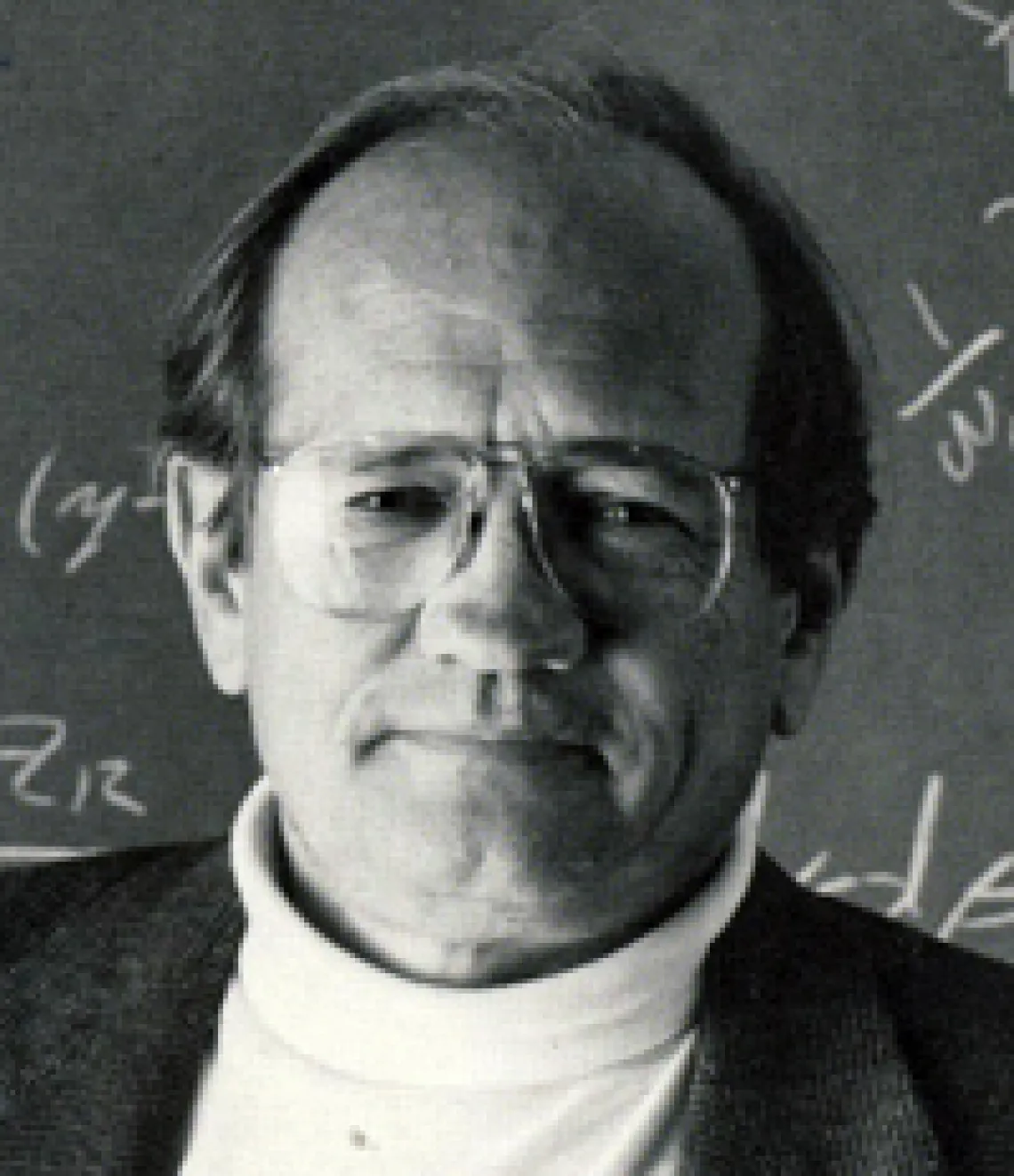
“Any individual depends more on the knowledge and encouragement that he or she gains from those around him or her than often seems the case.”
(R.R. Shannon, “The Art and Science of Optical Design,” Cambridge University Press, 1997)
Many things can make a college great, but its professors are at the very core. The best professors don’t just lead research, teach or write books, they inspire their students to excel. Professor Emeritus Robert (Bob) R. Shannon has been a prolific leader in the optics community. His many technical contributions have earned him numerous awards and honors, but his greatest source of career pride comes not from his achievements, but from the many students he has mentored—introducing them to the techniques of the field, exposing them to much of the current work being done, and serving as a liaison to other researchers and people of influence.
Several years after I left Tucson, in the early 1980s, I was working on a space-based laser beam control project as an employee of the Air Force Weapons Laboratory in Albuquerque. Bob served as a consultant during the design reviews for that project. One day, I thanked him for the good work he was doing for the Air Force. He said that he did that type of work for one reason—because it was a fertile source of new ideas for student thesis projects—the words of a dedicated teacher and adviser. (Michael K. Giles, ’76 Ph.D., Optical Sciences Center.)
Early Life
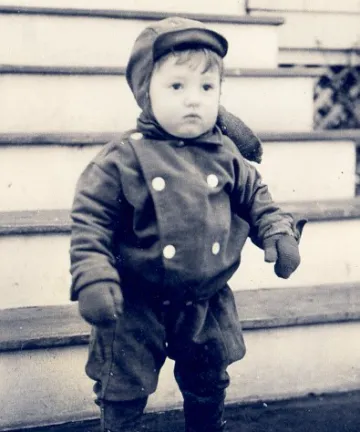
Robert Shannon in 1934.
Born in 1932, Bob grew up just north of New York City in Eastchester, New York. Although he had an interest in science throughout high school, nuclear physics—rather than optics—was on his mind. And when it came time to pick a college, school colors led the decision.
I graduated from high school in 1950—an interesting period following WWII. Everybody was very excited about science, and nuclear physics in particular. In looking around for schools to go to, I went to the high school guidance counselor and looked at all the college catalogs. One was yellow—all the others were maroon, blue or black. So, I pulled out the yellow one and it was for the University of Rochester (UR), which I had never heard of before. They looked kind of interesting, so I applied there.
After being awarded a NYS Regents Scholarship—requiring Bob to enroll full-time at a New York college or university—he decided to major in physics at UR. But, after hearing the director of the Institute of Optics, professor Brian O’Brien, speak, Bob quickly changed his major to optics.
He was the first scientist I had encountered who sounded like he really loved and enjoyed what he was doing. The subject of his talk was a lot of the things he had done in developing infrared equipment during WWII. While he spent some time on the theoretical and scientific aspects, most of the time was spent on telling how these things were engineered and built. Optics has the ability to be very tangible. You actually make things that people use, and I think that appeals to a lot of people somewhat more than the abstract concepts you find in various other branches of science. I became very intrigued with the idea of lens design and optical engineering.
Graduate School
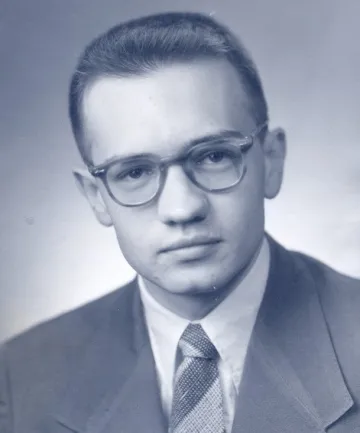
Robert Shannon as an undergraduate at the University of Rochester.
After receiving his bachelor’s degree in 1954, and marrying the love of his life, Helen Lang, Bob continued at UR to pursue a Ph.D. in optics with professor Robert (Bob) E. Hopkins as his thesis adviser—receiving his M.A. in Physics in 1957. As 1959 approached, he and Helen had two children and a third on the way.
My data gathering for my Ph.D. dissertation was finished and all that remained was writing. I had been offered a job at Itek Corporation in Lexington, Massachusetts, and decided to accept—figuring I could finish writing my dissertation at night. Unfortunately, the job became consuming and I never completed my Ph.D. This experience led me later to always encourage my students to get it all behind them before leaving to join the real world.
The Real World
When Bob started at Itek as a staff physicist, he expected to spend his years working on image evaluation and optical testing. But, a few months after joining the company, the senior lens designer left and he was asked to take over. As the lead lens designer, Bob was involved in most of the projects at Itek—eventually being promoted to Manager of Optical Systems within the Engineering Department, then to Director of Itek’s Advanced Technology Labs—where he led a team of talented optical engineers and designers.
During that time, Itek was a leader in the then-new area of space optics—the first to build cameras for successful photoreconnaissance satellites (Corona project)—and the group that I had put together was responsible for the design of many of these concepts. It was an exciting time and we were able to attract many talented individuals—like Jim Wyant, for example. I remained in contact with many of these people over the years—even as they moved on to other positions in the industry.
Move to Academia
As the first director of UA’s Optical Sciences Center (OSC), Aden Meinel realized the importance of hiring faculty with diverse backgrounds and a broad range of expertise. In 1968, four years after OSC’s founding, Aden was looking to hire an expert in optical design—particularly, lens design. He was aware of the industry’s experts and he focused his attention on Bob.
In October 1968, I attended the Optical Society (OSA) annual meeting in Pittsburgh, Pennsylvania. Jim Eyer, who was the associate director of OSC, came up to me and said 10 words that changed the course of my career, “Aden thinks you should come work for us in Tucson.” I interviewed at the University of Arizona the following January—the same time as Bill Wolfe—and had an offer letter from Aden waiting for me when I got home.
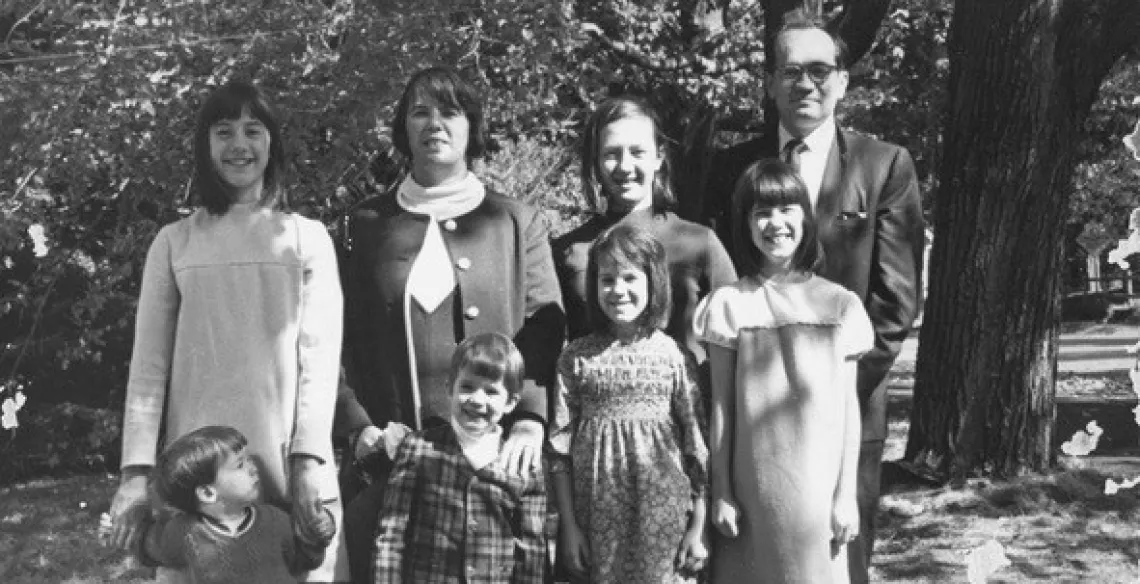
The Shannon Family in 1968, in Lexington, Massachusetts.
In April, Helen and I—along with our six young children and a very large Old English Sheepdog—began driving cross-country from Massachusetts to Arizona. After traveling over 2,000 miles—and hoping to arrive in Tucson the next day—we stopped in Tucumcari, New Mexico, for the night. I bought a copy of the “Arizona Republic” and was pleased to find that they had published a list of newly hired University of Arizona faculty starting in April—not as pleased to realize my name was not included! After a night of slightly restless doubt, I called the University the next day and confirmed my position at OSC and we continued our journey.
Professor Shannon
Pulling from his significant industry experience, Bob had a clear plan of how to set up a teaching program in lens design. He began teaching both the introductory (OPTI517) and the advanced (OPTI696A) lens design courses, and developed a relationship with the optical design software companies. Consequently, they began providing software to OSC students at no cost—allowing students to experience realistic problem-solving using the tools that would be available to them in industry after graduation. Over time, many students who took these courses went on to significant jobs in the optical industry.
Bob’s research focused on the use of computers for testing and optical design, metrication of large optical systems, design of synthetic-aperture optical systems, analysis and design of unobscured-aperture optical systems, and optical fabrication and test methods. He was the faculty adviser to 52 Ph.D. and M.S. students, and Bob and his research group were involved with many significant optical design projects including the conformal optics program and the optics for the first large telescope to use a primary mirror made from multiple separate elements—the MMT (Multiple Mirror Telescope).
I most enjoyed working with students. I always tried to mix in an element of practical optical engineering with the academic information. Fortunately, I was able to obtain some diverse and interesting topics for the students to work on. One of the most memorable was a program where we measured the effect of atmospheric turbulence on the imaging. The upper end was a U2 aircraft supplied by the U.S. Air Force, while a team of students and staff from OSC operated the ground-based end of the experiment.
Professional Societies
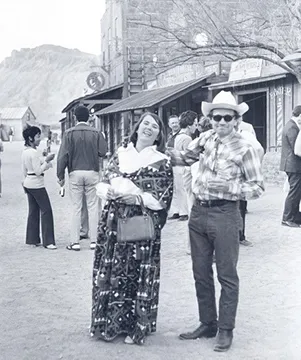
Helen and Bob at an OSA party at Old Tucson in the 1970's.
Early on, Bob realized the importance of being involved with professional societies, such as OSA and SPIE. His adviser at UR, professor Hopkins, was very involved with OSA and believed strongly that everyone should be involved with a professional society, so he always “scrounged up funding” for his students to attend meetings.
The management at Itek also encouraged their people to become active in the technical community—to serve as committee members in professional societies and to give papers at professional society meetings. While at Itek, Bob helped arrange several OSA and SPIE conferences and served as President of the New England Section of OSA.
As a faculty member at OSC, Bob encouraged his students to participate and meet other people in the field—"The more people you know, the more you understand what’s going on in the field. The more you understand what’s going on in the field, the more likely you are to be a contributor in the field.” His wife, Helen, was also involved with OSA—co-chairing, with Bob, the 1976 annual meeting in Tucson, with over 1,200 attendees from around the world.
In the early days, OSA was heavily member-driven with local sections planning and hosting their annual meetings. In the 70s, we had a couple of spectacular meetings in Tucson. My wife and I co-chaired the 1976 meeting with tremendous help from people at OSC and the local optical community. I know some people still remember the big party at Old Tucson, with the all-evening open bar!
Bob served as President of SPIE from 1979 to 1980, and as President of OSA in 1985. He used those opportunities to try and expand the involvement of larger numbers of members in the governance of the societies. Strategies included the appointment of more women to committees, eliminating the head table at the banquets, and reducing the term of the president of SPIE from two years to one year.
Director Shannon
In 1983, Peter Franken stepped down as the director of OSC and Bob was chosen to assume the role. OSC had grown a lot since the initial building had been finished in 1969—now with 45 faculty, 51 staff and 130 students, and an ever-growing contract and grant workload. Consequently, Bob was able to convince the University to build a 30,000-square-foot addition on the east side of the original building. This addition, which was completed in 1988, is now known as the east wing. But even the new building addition was not enough space, and 5,000 square feet of laboratory space in the McKale Center was obtained. OSC kept this space in McKale until July 2014.
In response to industry needs, Bob and Jack Gaskill, Associate Director of Academic Affairs, worked together to create an undergraduate optics program that started in the fall of 1989—designed to educate optical engineers who would be productive immediately upon graduation in areas involving optical design, optical fabrication and testing, lasers, optical detectors, optical instrumentation and optical fiber communications. At that time, OSC was a center, not a college, so it could not award a bachelor’s degree. An agreement was worked out between OSC and the electrical engineering department for a joint program in optical sciences and engineering, and the degree was initially awarded through the College of Engineering.
During Bob’s time as director, he also initiated the tradition of an OSC yearbook. The yearbook contained photos of faculty, staff and students and highlighted the programs and research of the Center. Each year a new photo of OSC personnel and students (facing the camera) was taken to be printed on the front cover. Everyone then turned around and a second photo was taken to adorn the back cover—a testament to Bob’s keen sense of humor.
Committees and Honors
By the late 1980s, the field of optics had experienced dramatic technical advances applicable to numerous industries and government organizations. With strong research, technology and leadership experience, Bob was asked to serve on many committees and boards. A sample includes the Air Force Scientific Advisory Board, Aerospace Corporation’s board of trustees, the Hubble Space Telescope Optical Systems Board of Investigation, and the National Research Council’s Committee on Currency Features Usable by the Visually Impaired.
One of Bob’s greatest strengths was his ability to make a significant impact on any committee or board of which he was a member. He always took the time to understand the issues and was always prepared to make considered contributions to discussions. (James C. Wyant, Professor Emeritus, Wyant College of Optical Sciences.)
In 1992, Bob was elected to the National Academy of Engineering—one of the highest professional honors accorded an engineer. Four years later, he was awarded the SPIE Gold Medal—the Society’s highest honor—in recognition of his exceptional contributions to the advancement of optics. In 2004, a tribute conference was held at a SPIE Optical Science & Technology meeting in Denver, Colorado, to honor Bob and OSC colleague Professor Emeritus Roland Shack for their contributions to research and teaching. Bob also received honorary doctorates from the Centro de Investigaciones en Optica in Leon, Mexico, in 2005, and from the University of Rochester in 2020.
Professor Emeritus Shannon
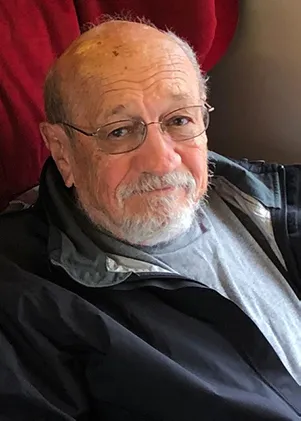
Bob decided it was time to retire as director of OSC in 1992—giving him the opportunity to pursue new areas of interest, such as traveling with his family. Two of their most memorable trips have been a cruise to Alaska and a Grand Canyon rafting trip down the Colorado River.
In 1997, Bob shared a lifetime of his experience in optical design engineering— summarizing his approach to teaching lens design in his book, “The Art and Science of Optical Design.”
The process of optical design is both an art and a science. There is no closed algorithm that creates a lens, nor is there any computer program that will create useful lens designs without general guidance from an optical designer. The mechanics of computation are available within a computer program, but the inspiration and guidance for a useful solution to a customer’s problems come from the lens designer.
In 2006, Bob and Helen recognized the benefit of emeritus faculty maintaining close ties to the College and made a generous donation to establish an Emeritus Professors’ Office (Room 423)—a shared office space to support emeritus faculty in their ongoing scholarly and professional activities.
(Editor’s Note: In 2014, OSC alumni John R. Rogers and J. Michael Rodgers established the Robert R. Shannon Graduate Student Endowed Scholarship in Optical Sciences in appreciation of Bob’s wisdom, mentorship and lasting friendship. In 2019, Professor Emeritus James C. Wyant gifted the Robert R. Shannon Endowed Chair in Optical Sciences to the College to honor Bob’s countless contributions to the science of optics as well as the College.)
